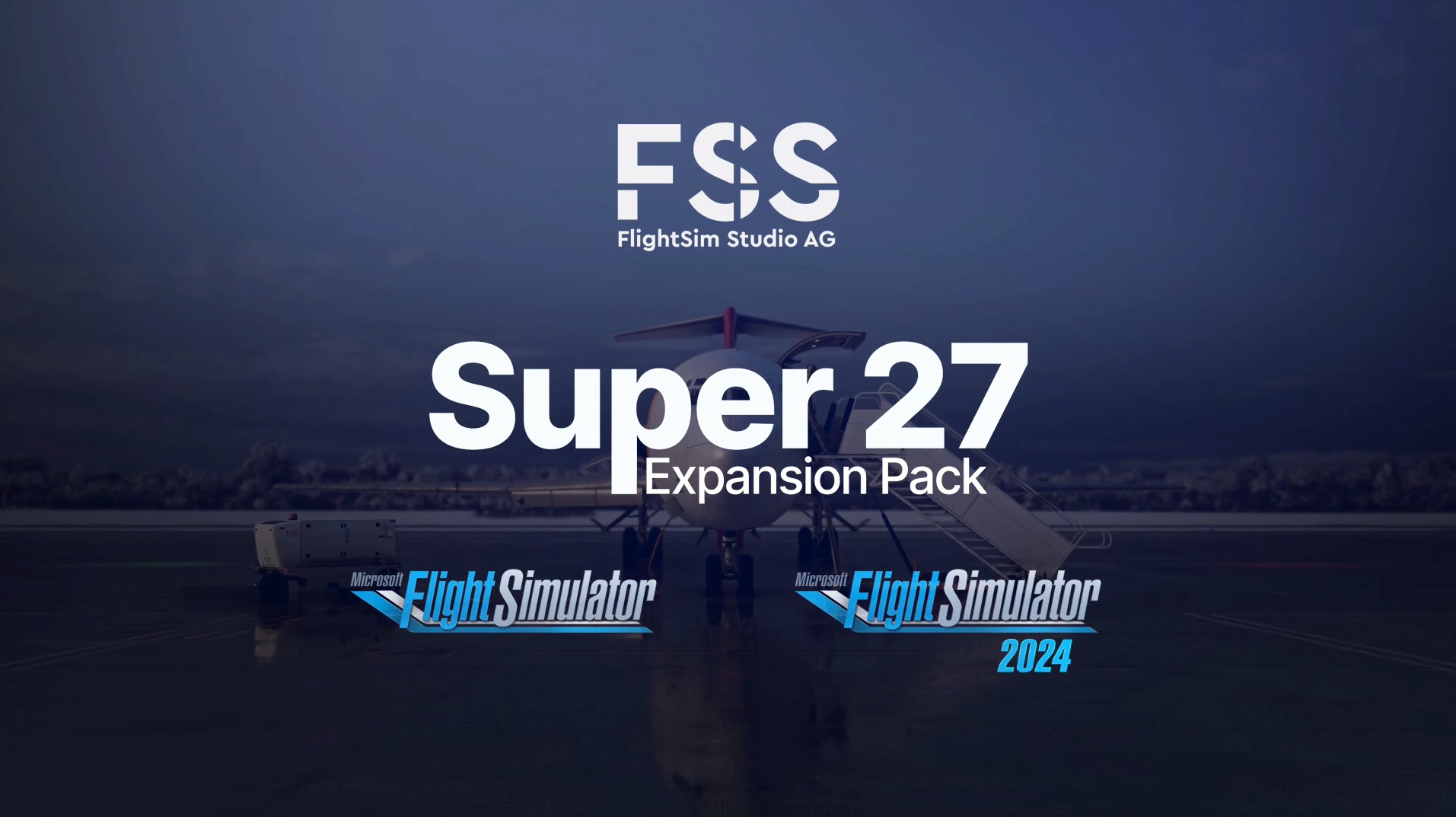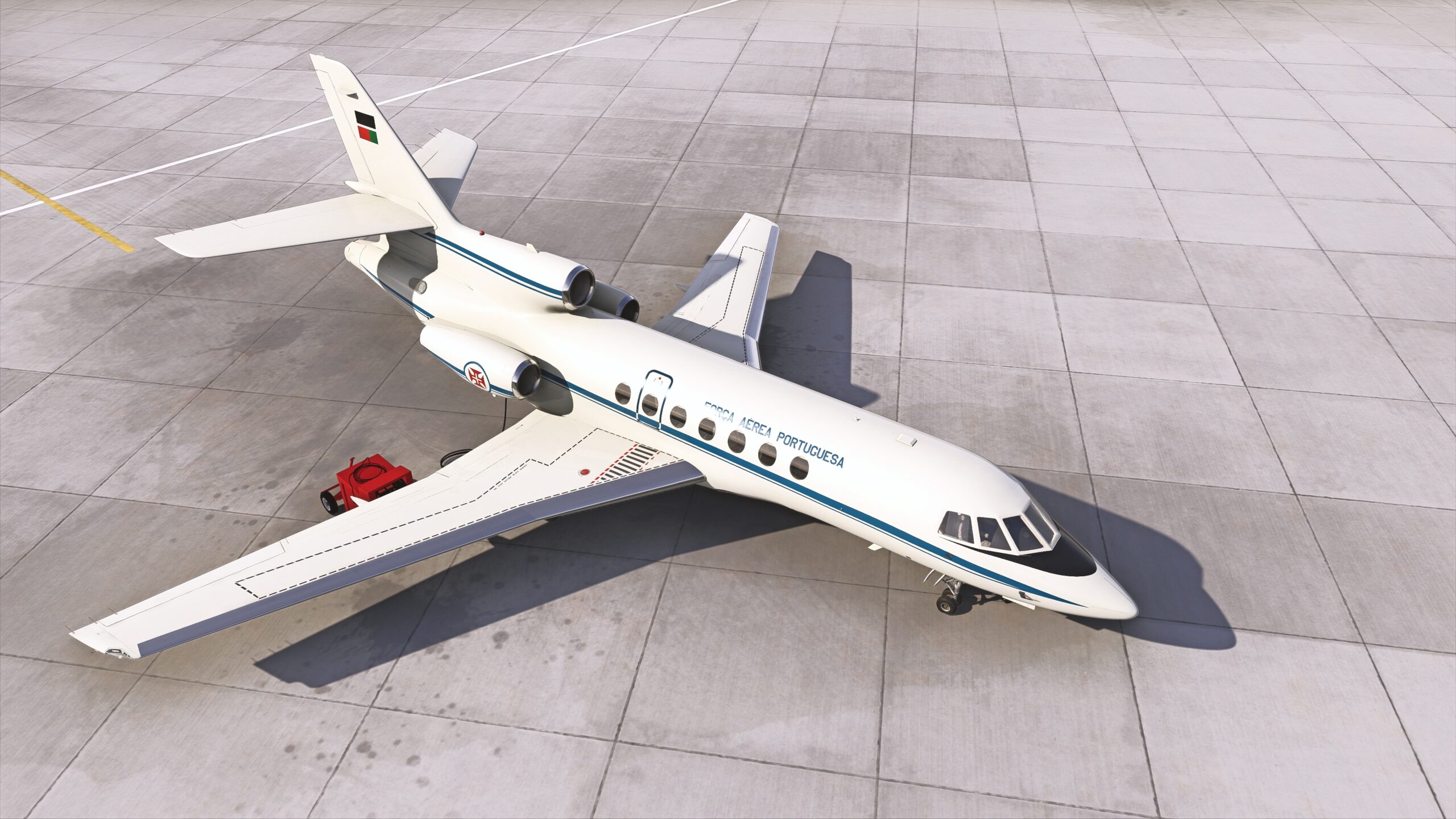Companies and developers come to FlightSimExpo to announce their new products tailored to enhance our experience as flight simmers. Thrustmaster, although a global company with a focus spread across the whole gaming industry, is no different, and this year arrived in Houston, Texas, to show off the latest addition to their flight sim peripheral portfolio: the Viper TQS.
The new, 2023-announced Viper TQS succeeds the original HOTAS Cougar released 20 years ago, in 2003. Just like back in 2003, the design of the unit is based on the throttle used in the actual Lockheed Martin F-16 Flying Falcon, unofficially recognized as the “Viper”.
For full transparency, I received a review copy of the Viper TQS from Thrustmaster, but as you’ll notice throughout the review, I did not let that affect my opinion. But now, let’s get started with the review.
Packaging
Thrustmaster’s Viper TQS packaging seamlessly evolves from its predecessors in the line of military products. While it doesn’t tip the scales with any distinct advantages or drawbacks, keeping the information flow steady and the design enduringly attractive, it adds a thoughtful touch for those in the know about the product range. It skillfully upholds the essence of models released a decade or more ago, showcasing the product’s success in staying true to its heritage.


Delving into the actual packaging, it’s a pleasant revelation that, despite the familiar exterior, the inner workings of the box have undergone significant enhancement. The shift from styrofoam to paper aligns seamlessly with modern standards. The assurance here is that the product sits securely in the box, minimizing any potential damage. Furthermore, the unit is also packed in a protective plastic bag, preventing any possible scratches from the paper.
The carton packaging also ensures a pleasantly noise-free unpacking experience, avoiding the usual scratching sounds associated with styrofoam.


In the Viper TQS box, you’ll find the unit, a single cable for connecting to your computer, and a brief manual guiding you on how to access the full manual online.
Overall, I’m pleased with Thrustmaster’s approach to packaging – they keep it straightforward and efficient for the long haul.

Software compatibility
Like most peripherals designed for flight simulation, the Thrustmaster Viper TQS is compatible with all major platforms we are familiar with. I put it to the test on Microsoft Flight Simulator, although the selection of accurately simulated fighter jets in that game is quite limited. Additionally, I tried it on DCS, a platform that leans more towards realistic simulations of fighter jets.
I’m pleased to report that compatibility is solid on both platforms. It’s worth noting that my unit didn’t come with pre-mapped buttons, so I had to do the button mapping myself. While some might see this as a drawback, I viewed it as just another round of customizing buttons in my simulator – a routine I’m quite used to.
First Impressions
I came into this product with some pretty high expectations. Thrustmaster’s track record with previous releases had been impressive. As I’ve noted in earlier reviews, they consistently delivered products that struck a great balance between performance and price.
Unfortunately, in this case, setting the expectations high wasn’t worth it and led to unnecessary disappointment that could have been avoided. I am not very keen on military flight simulation but was approaching the product as if I was, given the little experience I have with military flight simulation compared to civil flight simulation.
First and foremost, I was taken aback by the size of the controls, especially in terms of height. It stands to reason that for an accurate representation of F-16 throttle control, the base must be elevated. However, creating something tall without providing sufficient width, especially when using lightweight materials, is bound to lead to issues. And indeed, when I manipulate the throttle lever on the unit, more often than not, the base tends to tip over. When I want to engage thrust reversers or, on the opposite end of the axis, afterburners, I must be very careful not to exert too much force to avoid toppling the entire control.
Secondly, as I noted in the preceding paragraph, the unit is exceedingly lightweight. While this is generally desirable – I certainly don’t want to be burdened by heavy equipment – the centre of gravity isn’t sufficiently low, causing the unit to shift about incessantly.
It’s also noteworthy that Thrustmaster touts high-quality materials in the Viper TQS, yet the product feels almost entirely composed of plastic, which it is known to be not – metal parts are visible on the unit. It definitely did not feel like that when I used it for the first few hours.
The base is… poorly designed and boring
The control base is, frankly, the least impressive aspect of this flight sim peripheral. Comparing it to other products, a common trend stands out – their bases are generally wider and tend to carry more weight than the controls themselves.
The Viper TQS’s base falls short in terms of both width and weight compared to the rest of the unit, making it prone to flipping. Although I initially pointed this out in my first impressions, even after using the unit for a few months, the issue persists. I find myself accidentally flipping it over during moments that demand swift action. This aspect is undeniably frustrating, and I can see how it might deter someone from choosing this unit.

As for its design. The base is designed to fit the Action Pack, which makes it pretty plain without it. You’re spot on when arguing that the base is more than just the bottom part. However, looking at the rest of the base from a visual standpoint, it’s safe to say it’s rather underwhelming, and it pains me to admit this considering my high anticipation for the product.


The attempts to enhance its appeal are limited to 2D text and illustrations. While this might be acceptable for the base of a typical peripheral where visibility is less of a concern, the Viper TQS places the base in a more prominent position than the flight stick itself and is always visible and on focus. The stark contrast between the intricately designed control stick and the plain base creates a somewhat unusual combination.


Prevent movement on desk
The manual for Viper TQS features a section on desk mounting options, including a section on mounting the unit with Trustmaster’s TM Flying Desk Mount and the TM Flying Clamp. The mount is currently selling for €40 and the clamp for €80. I didn’t have a chance to test the unit with these solutions, but the unit is designed to fit with them, and since they are both mechanical mounts to the desk, I do not see a reason why they shouldn’t work and hold the unit perfectly in place.
I do not think that designing and selling a product that is pretty much unusable without separate purchases is a trend we should support. If I take a look at Thrustmaster’s other product, the TCA Boeing Yoke, it comes with clamps to fixate the unit to the desk. They cost a small amount to manufacture and include in the packaging and are a nice touch to every product, especially if it does not hold properly on the desk on its own.
A counterargument to that could be that the unit is not designed to be placed on the edge of the table, but then Thrustmaster could have made the base heavier, forcing the centre of balance lower and thus making it more stable and introducing some sort of suction or rubber material to the bottom of the unit to prevent the movement I discussed before.
Throttle lever and its functions
Probably the reason why you will consider purchasing Thrustmaster’s Viper TQS is because you want to immerse yourself even further into military flight simulation, where often fighter jets have throttle levers set in the left canopy wall and move in a vertical circular motion.

The Viper TQS’s throttle lever faithfully mirrors that of the F-16 visually. Thrustmaster’s representation is remarkably accurate, and I thoroughly enjoyed using it in conjunction with the F-16C addon in DCS. Despite the issues I mentioned in the initial impressions section, this experience significantly altered my perceptions of the product.
The sensors operate with impressive precision, and I encountered no instances of synchronization issues or lag.
Control mechanism
The throttle lever wouldn’t work with a proper mechanism, and I am happy to say that whilst everything is plastic, the mechanism is not. If we take a closer look at how the controls work, we can notice that the mechanism and connection rods are from metal.



Thrustmaster made a wise choice here, and it’s a positive trend seen across flight sim peripherals. Likewise, the use of metal for the breaking points along the throttle axis is a logical move, considering the substantial pressure they endure.
Buttons, buttons everywhere!
If you have ever flown a fully simulated military jet in a flight simulator, particularly in DCS (Digital Combat Simulator), you know that military jets are the complete opposite of Airbus airliners. MSFS, while exceptional in its own right, falls short of offering the depth and realism found in DCS when it comes to military aircraft simulations.
In this case, I’m not talking about the fact that Airbus airliners are missing a 20mm Vulcan 6-barrel rotary cannon ready to shoot 6,000 rounds in a minute or pods to carry up to 76 CRV7 70mm rockets. I’m talking about the complexity of such aircraft and the number of buttons needed to operate every single aspect of the aircraft.
Just as on the real throttle grip, Thrustmaster’s Viper TQS features plenty of buttons that match the location and functionality of their real counterparts, which allows for perfect immersion into the simulation.


I was very surprised to see the build quality of the throttle grip and the buttons on it. The last product I used from Thrustmaster was their TCA Yoke Pack Boeing Edition, which I also reviewed but didn’t have a positive opinion on the buttons. They were wiggly, did not hold in place, and felt very cheap. Hence, it was an amazing sight to see Thrustmaster listening to feedback, whether ours or from other community members, by including a set of buttons and switches with a great, sturdy feel and satisfying ASMR sounds.


Unfortunately, the “CHAFF/FLARE” button on the base has a very cheap feeling to it and does not come back easily when is pushed, as if there was some unintentional friction happening. It’s a bit disappointing to see such a quality gap between the buttons on the stick and the base.

Price point
The Viper TQS, excluding the Mission Pack, is available through official channels at $349.99 or approximately €320. In contrast, the original HOTAS Warthog Dual Throttle is currently priced, also through the official channels, at $279.99 or €255.
Seeing that, I became way more critical of the product. Paying more for a unit that’s mostly plastic and has a poorly designed base felt a bit off. For reference, the less expensive HOTAS Warthog throttle quadrant is entirely metal and comes with buttons on the base by default. I could mention that it also has more versatility with the typical throttle design, but that doesn’t matter here since the Viper TQS is all about accurately mimicking the flight controls of the F-16, and the company can’t be faulted for staying true to that replication.
Conclusion: Is Viper TQS worth it?
I invested quite a few hours flying with the unit, really trying to get the hang of it and pinpoint situations where I’d confidently recommend it to a friend, or at least suggest they give it a thought. Despite having the unit for a few months, the initial month was still kind of riding on the anticipation and expectations, making me feel a bit hesitant to dive into a review.
Having used it for the past few months, I can confidently say that I don’t recommend this unit. The primary reason behind this conclusion is the price, compared to other alternatives from Thrustmaster. It’s hard for me to fathom shelling out €320 for a unit made of plastic that has a tendency to tip over, essentially rendering it useless for its intended purpose. It almost feels like it was designed by product designers who lacked experience in flight simulation.
The only upside I discovered with the unit is the throttle stick. It’s exceptionally well-designed, comfortable to hold even during longer sessions, and boasts an ample number of buttons strategically placed across it to authentically replicate the controls of the actual F-16.
I also recorded a video showcasing its features with stability issues and the CHAFF/FLARE button quality difference.
If you want to purchase the Viper TQS, you can do so through various outlets. The current MSRP is $529.99 (€484) with the Mission Pack, or $349.99 (€320) without the Mission Pack – the version I reviewed.
Feel free to join our Discord server to share your feedback on the article, screenshots from your flights or just chat with the rest of the team and the community. Click here to join the server.














